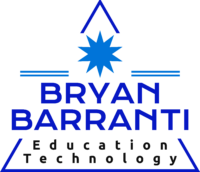
Reading Valerie Irvine’s article The Landscape of Merging Modalities (2020) gave me a new perspective on how far online learning modalities have come since my early experiences with “distance education.” In the article, Irvine explores several emerging modalities throughout the history of Edtech and online learning, such as Blended (Hybrid), Blended Synchronous (Synchronous Hybrid), and HyFlex learning, but what stood out most to me was her concept of Multi-Access Learning. This model allows students to access courses in multiple ways: they can attend in person, participate live online, or engage asynchronously, all while maintaining equal access to course content and interactions. It is a dynamic approach that prioritizes flexibility and accessibility for all types of learners, enabled by the significant advances in technology.
Reflecting on my own experiences, I realize that I have had a long-standing “modality bias,” which I attribute largely to ignorance of the evolving structures of online learning. Back in the 1990’s during my undergrad at SFU, I enrolled in “distance education” courses a few times but always ended up withdrawing at the last minute before starting any actual coursework. The reason? I am a very social person and needed the face-to-face interactions that a traditional classroom environment provided in order for me to be successful in my learning journey. Back then, distance education was a lonely journey, reading through course materials at home, completing assignments, and emailing them to the professor without any real personal connections. There were no class discussions, no reflections, no physical interactions with other students or the professor, and it felt very isolating.
Now, with new and ever-improving technologies like video conferencing, collaborative tools, and learning management systems that allow real-time interaction and multimedia engagement, online learning has evolved into something much more dynamic, engaging and interactive. Multi-Access Learning, for example, allows for rich interactions between students and instructors, no matter how they choose to access the course to meet their personal learning needs. These evolving technologies have made it possible to break down the barriers of location and time, while creating a far more inclusive and interactive environment. It is a far cry from the old model, and I am grateful to have been exposed to these new modalities through this Masters program.
Looking ahead, I really believe the future of modality in education will continue to evolve, offering even more flexibility and personalization than we’ve seen so far in the past twenty years. With the way technology is advancing, I can imagine Multi-Access Learning expanding to include things like virtual reality, where students could fully immerse themselves in course materials or collaborate with peers in ways that feel almost like being there in person. I think AI will also play a bigger role, helping to provide personalized feedback and learning paths that adapt to each student’s needs, while still maintaining those important human connections that I’ve always valued in my learning and teaching experiences. The barriers of location and time might potentially fade away completely, allowing students to choose exactly how and when they engage with their education, no matter where they are in the world. I’m excited to see how these possibilities unfold, and I feel fortunate to be experiencing some of this transformation first-hand now through my Masters program.
References
Irvine, V. (2020). The landscape of merging modalities. Retrieved from https://er.educause.edu/articles/2020/10/the-landscape-of-merging-modalities
